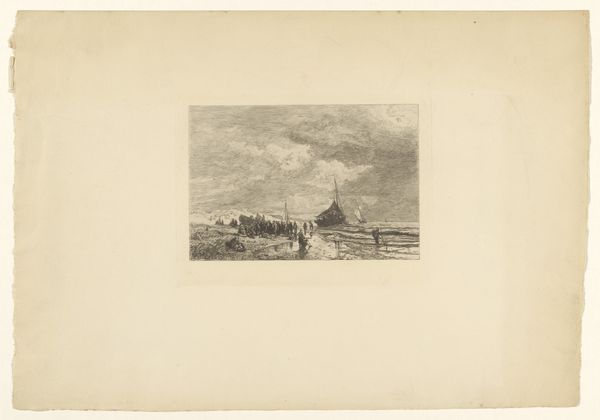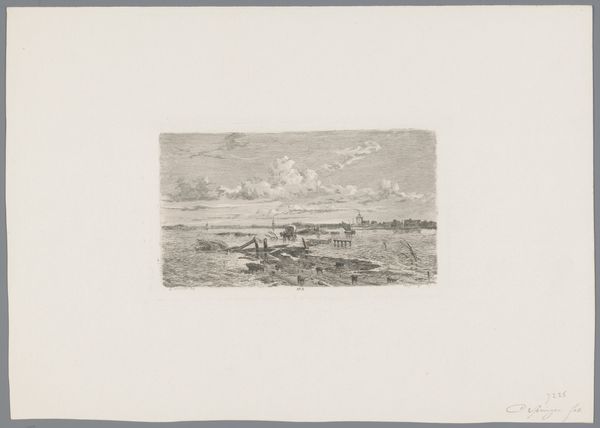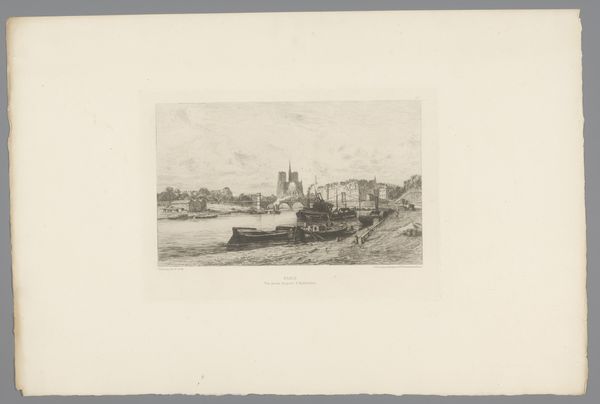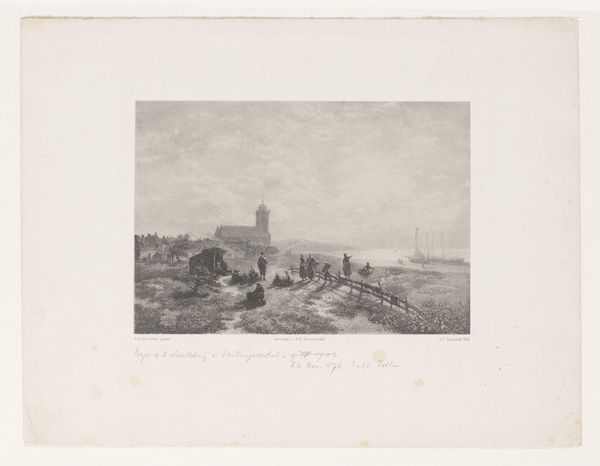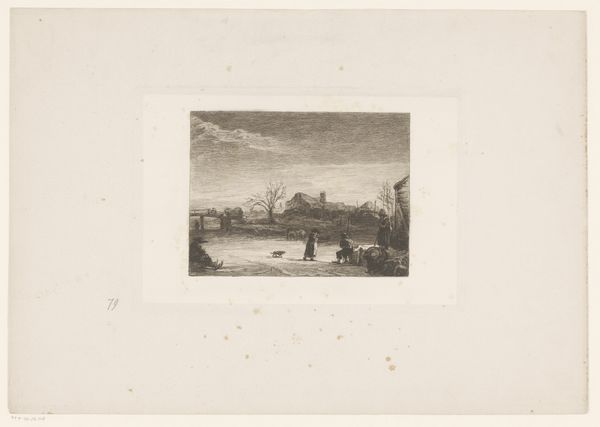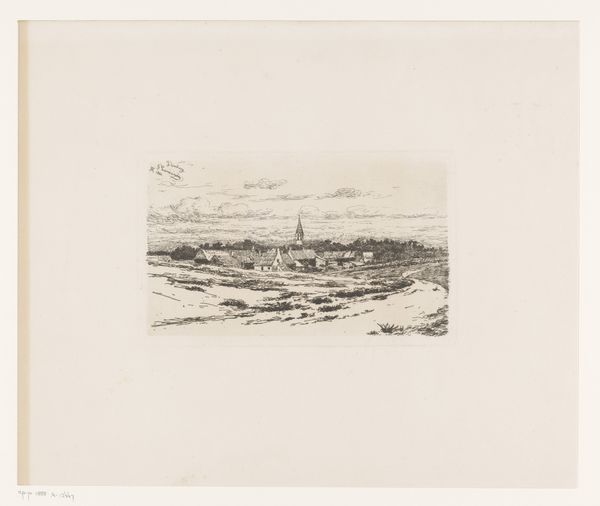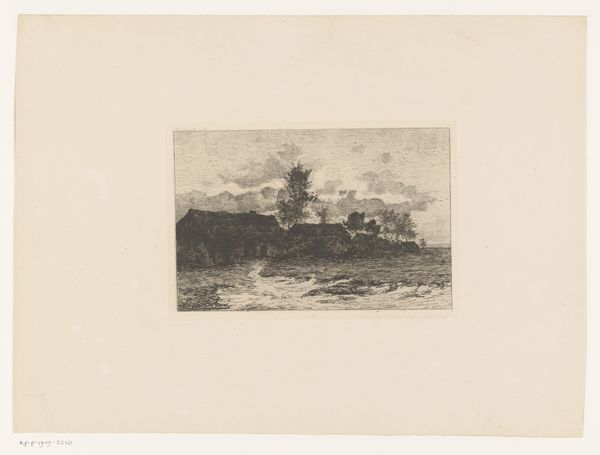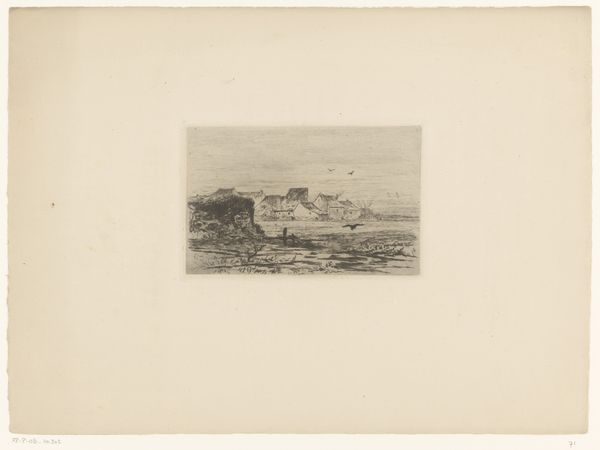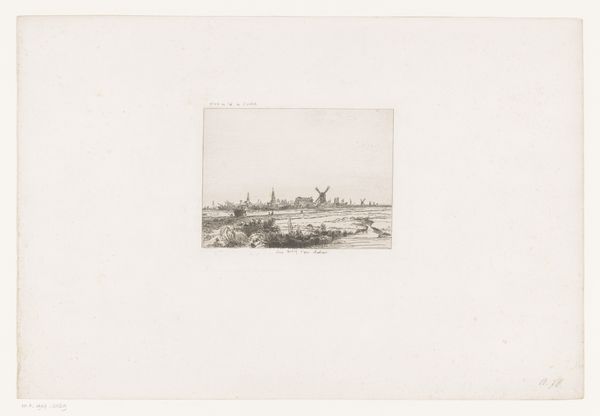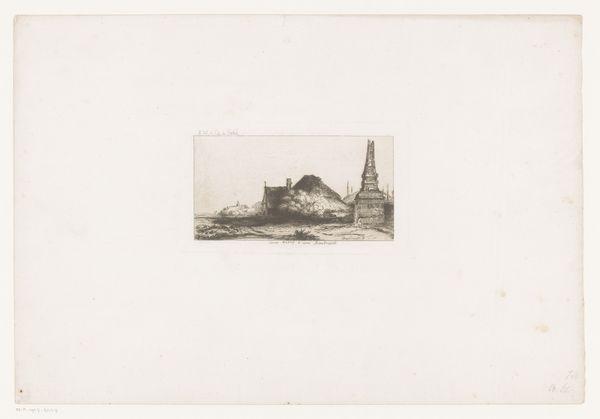
print, engraving
# print
#
landscape
#
genre-painting
#
engraving
#
realism
Dimensions: height 300 mm, width 422 mm
Copyright: Rijks Museum: Open Domain
Editor: Here we have Johann Wilhelm Kaiser’s “Redden van mensen en vee uit de Arnhemsche Waard, 1855,” an engraving that seems to capture a moment of intense urgency. It feels quite bleak, depicting people and animals in what seems like a flood. What kind of story do you think it's telling? Curator: The narrative Kaiser presents certainly resonates with the mid-19th century preoccupation with representing real-life events. This piece should be viewed through the lens of increasing industrialization and its impact on society. Images like these often served to both document events and to reinforce particular societal values, such as community support during a crisis. Notice how the figures are arranged; what does it suggest about social roles at the time? Editor: I see, there are people clustered on the rooftops and shores. It does appear that some figures are helping others into boats, giving the composition an order and reinforcing societal expectations of their role. Do you think the piece was used for a political purpose at all? Curator: Absolutely, the political aspect becomes clear when considering the medium: engraving. Prints such as this would have been widely distributed through newspapers or journals, reaching a large audience. They visually document events but also served to elicit emotional responses and encourage social or political action. Did this flood, you think, cause some political instability, judging by the message relayed? Editor: That’s fascinating. It's easy to overlook the power of visual imagery in shaping public perception of disasters. The scale of distribution enabled by prints really highlights how art can directly influence public opinion and even political discourse. I initially saw a disaster scene, now it's all politics. Curator: Precisely. Understanding art within its historical context allows us to decipher not just aesthetic choices, but the underlying social and political currents that shaped both its creation and its reception. Each work really becomes a dialogue between artist and history. Editor: It gives so much food for thought knowing that an artwork, such as this, represents not just aesthetic intentions but complex interactions within a society. Thanks for expanding on it.
Comments
No comments
Be the first to comment and join the conversation on the ultimate creative platform.
